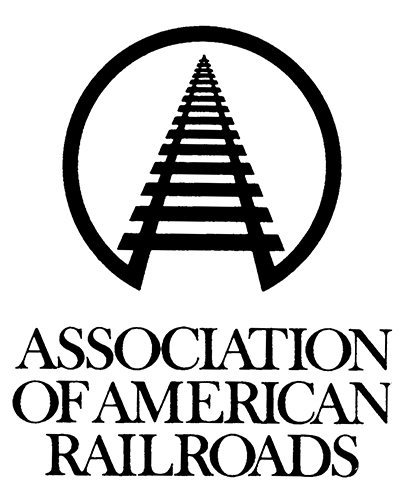AAR reports annual gains for U.S. rail carload and intermodal volumes in May

United States May rail carload and intermodal volumes each showed growth in May, according to data issued this week by the Association of American Railroads (AAR).
Carloads were up 3.2%, or 41,078 units, annually to 1,319,420. And the AAR said that 15 of the 20 carloads commodity categories it tracks saw gains compared to May 2017, including: crushed stone, sand & gravel, up 16,811 carloads or 13.7%; chemicals, up 9,368 carloads or 6.1%; and coal, up 6,707 carloads or 1.7%. Commodities with annual declines included: nonmetallic minerals, down 4,187 carloads or 17%; metallic ores, down 2,254 carloads or 6.6%; and all other carloads, down 2,076 carloads or 6.9%.
AAR officials pointed out that when removing coal from the total U.S. rail carload count carloads were up 3.9% annually, and when removing coal and grain, carloads were up 4.1%
Intermodal containers and trailers rose 6.6%, or 86,010 units, to 1,398,203. Combined U.S. rail carload and intermodal volume saw a 4.9%, or 127,088-unit increase, to 2,717,623.
“In May, U.S. rail carloads were higher in 15 of the 20 carload commodity categories the AAR tracks, including nearly all of the major ones,” said AAR Senior Vice President of Policy and Economics John T. Gray, in a statement. “In addition, intermodal volume in May was the second highest for any month in history. Right now, the economy is clicking, and railroads are both beneficiaries and enablers of that. One potential cloud on the horizon, though, involves trade. Freight railroads are essential to the flow of goods and rely on sensible trade policy. We’re hopeful that federal policymakers will recognize that an unnecessary trade war would do far more harm than good.”
The decent volume numbers speaks to a solid demand environment, which has been evident in pricing, too, but, especially, on the carload side, there has been an underlying theme that even with these volume gains, service levels have room for improvement.
What’s more, it has led to many freight rail stakeholders wondering if the railroads can handle, or support, additional demand should things trend up from here.
“The key thing to think about here is that demand is actually accelerating and is clearly there in in [nearly] every category across the board, which is pretty good,” said Tony Hatch, president of New York-based ABH Consulting.
Even though rail carload volume growth is decent, Hatch observed that, in a way, it is a bit of a mystery, when factoring in the current state of rail services, which, he said, is not getting worse, but not improving to the rate many industry stakeholders expected it would be at by now. He added that service levels are expected to improve this summer and be more in lockstep with what has been a “pretty good demand story” along with solid financial results.
“The question to me is what would have it been if the rails had been operating as they did in 2016 and how would they have handled this environment in which you have the best pricing environment in many years, if not a generation,” he said.
On the intermodal side, Hatch noted that the ongoing truck driver shortage and tight over-the-road capacity have affected large pockets of rail carload merchandise, although the biggest impact is on intermodal.
“The reason is that it has allowed the rails to get away with having less than optimal service, with the intermodal [volume and price] numbers still growing, and they are able to provide capacity even if it is not at the same levels it has been at in the past,” he said. “A big driver in recent months for the gains in intermodal is related to a combination of truckers raising rates, higher fuel prices, and fewer drivers.”
For the week ending June 2, the AAR reported that U.S. rail carloads were up 0.2% to 252,162, and intermodal units were up 6.3% to 257,578.

Article Topics
Rail & Intermodal News & Resources
U.S. rail carload and intermodal volumes are mixed in April, reports AAR Q1 intermodal volumes are up for second straight quarter, reports IANA 2024 State of Freight Forwarders: What’s next is happening now STB announces adoption of final reciprocal switching rules Norfolk Southern-Ancora Holdings proxy battle accelerates Intermodal growth volume remains intact in March, reports IANA Shipment and expenditure decreases trend down, notes Cass Freight Index More Rail & IntermodalLatest in Logistics
C.H. Robinson highlights progress of its AI-focused offerings with a focus on automating shipping processes UPS announces CFO Newman to leave company, effective June 1 Preliminary April North American Class 8 net orders are mixed Senators take a close look at Amazon with Warehouse Worker Protection Act Despite American political environment, global geopolitical risks could be easing Maryland DOT: $1.9 billion and up to four years to rebuild bridge sunk near Baltimore port April Services PMI contracts after 15 months of growth, reports ISM More LogisticsAbout the Author
Subscribe to Logistics Management Magazine

Find out what the world's most innovative companies are doing to improve productivity in their plants and distribution centers.
Start your FREE subscription today.
May 2024 Logistics Management

Latest Resources














